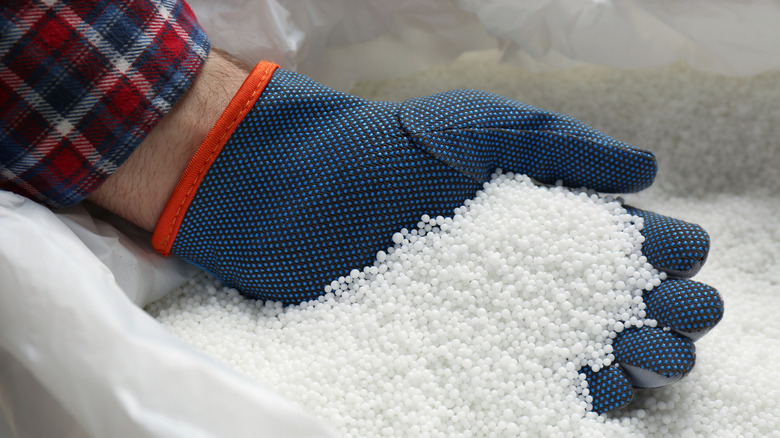Skip The Rock Salt: This Alternative Driveway De-Icer Is Perfect For Milder Winters
We may receive a commission on purchases made from links.
When the weather outside gets frightful, it's time to start making plans on how you're going to deal with that ghastly ice and snow. If you live in an area where temperatures aren't dropping far below freezing but ice is still a problem, you may be able to skip the rock salt and try an alternative that's better for your lawn: urea. You can purchase urea in both liquid and granular forms, such as this Duda Energy 25lb Prilled Urea. Both can work for ice removal, however, the solid form will behave more like rock salt. If your winter is milder, or at least has some milder days, urea can be a good alternative to rock salt. If it drops below 25°F, however, this will not be a good choice because of urea's eutectic temperature, which is 12.2°F. This means that the colder it is below 25 degrees, the more likely it is that things will freeze right back up, and your driveway will become even more like an ice rink.
Urea doesn't contain chlorides, so it won't corrode concrete driveways like traditional rock salt. Aside from melting the ice in your driveway, when used in moderation, it can also have beneficial effects on your lawn due to its composition. Urea is rich in nitrogen, which is an excellent fertilizer. As the ice melts and washes away in spring, the urea that runs off will give lawn or garden areas a nice natural boost of nutrients. However, this chemical makeup is also why it is not advisable to use it if you want to help the environment in the long run, unless you take some precautions.
How to use urea to safely melt ice on your driveway and protect the environment
Just like with your basic rock salt, you'll first need to remove the snow before sprinkling crystallized or liquid urea on your driveway. If you apply urea without first removing snow, you'll melt the snow with it, and you're more likely to make more ice as the snow refreezes. Once you're done with that step, you can sprinkle urea onto the icy areas just like you would rock salt. While you can use liquid urea, it may be easier to spread the granules, as pouring liquid urea could be messier and more wasteful. Because it contains about 46% nitrogen, urea is best used sparingly to avoid chemically burning any nearby shrubs or lawn, but it's a brilliant solution for driveways that ice over only occasionally.
While urea is a friendlier option for melting ice in households with pets and is less corrosive to your driveway, it still poses potential hazards if it runs off into natural waterways. That spring thaw runoff that enters storm drains and flows into public waterways is where the issue lies with using this rock salt alternative. Due to its high levels of nitrogen, this substance can cause problems for aquatic life just as much as it helps plants above ground. The nitrate content in urea inspires algae blooms to thrive, which can consume oxygen and block sunlight for other plants and fish in the water. To prevent this issue, consider using gravel for improved landscaping drainage, encouraging runoff to filter through the ground, rather than flow into nearby waterways or storm drains. If you're worried about the damage urea could potentially do to the environment, there are other methods for melting ice without rock salt.

